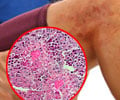According to new research, children living in prosperous countries are more prone to allergy-related asthma , as against their poorer country counterparts. The study is based on the inspection of a large group consisting of 8- to 12-year-old children who participated in Phase Two of the International Study of Asthma and Allergy in Childhood (ISAAC).
“Atopic sensitisation has long been known to be related to childhood asthma,” wrote Gudrun Weinmayr, M.D., M.P.H., of the Institute of Epidemiology of Ulm University in Germany, and lead investigator of the study. Dr. Weinmayr noted that the strongest links have been found in studies in affluent western countries. “Thus, it may be that the link between asthma and atopic sensitisation differs between countries,” he added.From over 54,000 standardized questionnaires parents’ responses about their children’s respiratory symptoms were assessed by the team and evaluated the results of more than 31,000 skin-prick tests. From the study, they analysed the serum levels of allergen-specific IgE, in nearly 9,000 children from rural African to urban Europe. Later, they determined the degree of variation between allergic sensitisations and asthma symptoms with the gross national income per capita (GNI) of the country from which they were collected. “We observed large variations in the prevalence of asthma symptoms and of atopic sensitisation among populations,” wrote Dr. Gundmayr.
The association between current wheeze, which is an sign of asthma, and skin prick sensitivity, indicator of allergic reaction, was strong in almost all affluent countries, as compared to the less affluent countries.
Children living in affluent countries with allergic sensitisations were 4 times as likely to have asthma than their non-sensitised counterparts. “This means that local environmental factors may affect asthma and allergy in different ways,” said Renato T. Stein, M.D., Ph.D., of the Pontificia Universidade Catolica do Rio Grande do Sul, in Brazil, another researcher involved in the study. “Another way to interpret these findings is that asthma in [more affluent] cities is predominantly atopic asthma, while in socially less developed areas asthma may be more of the non-atopic phenotype,” said Dr. Stein.“A wide range of different factors, including nutrition, microbial and allergen exposure, housing conditions, and exposure to pollutants, and so forth may have played a role,” they wrote, remarking that a “center level correlation with GNI does not imply a similar relation at the individual level with personal wealth,” he added.
The study has been published in the American Thoracic Society’s American Journal of Respiratory and Critical Care Medicine.
Advertisement
ANN











